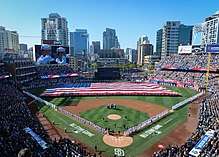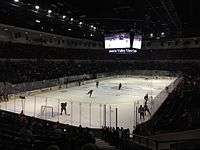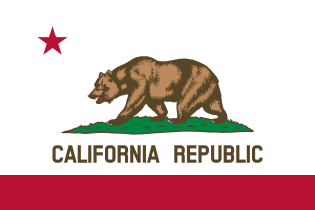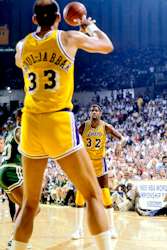San Diego Padres
The San Diego Padres are an American professional baseball team based in San Diego, California. They compete in Major League Baseball (MLB) as a member club of the National League (NL) West division. Founded in 1969, the Padres have won two NL pennants—in 1984 and 1998, losing in the World Series both years. As of 2018, they have had 14 winning seasons in franchise history.[5] The Padres are one of two Major League Baseball teams (the other being the Los Angeles Angels) in California to originate from that state; the Athletics were originally from Philadelphia (and moved to the state from Kansas City), and the Dodgers and Giants are originally from two New York City boroughs—Brooklyn and Manhattan, respectively. The Padres are the only MLB team that does not share its city with another franchise in the four major American professional sports leagues. The Padres are the only major professional sports franchise to be located in San Diego, following the relocation of the Chargers to Los Angeles in 2017. They are also the only franchise in the MLB not to have a no-hitter, having gone 8,020 games without throwing one, a major league record to begin a franchise.[6]
| San Diego Padres | |||||
|---|---|---|---|---|---|
| Established in 1969 | |||||
| |||||
| Major league affiliations | |||||
| |||||
| Current uniform | |||||
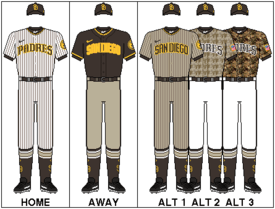 | |||||
| Retired numbers | |||||
| Colors | |||||
| Name | |||||
| |||||
| Other nicknames | |||||
| |||||
| Ballpark | |||||
| |||||
| Major league titles | |||||
| World Series titles (0) | None | ||||
| NL Pennants (2) | |||||
| West Division titles (5) | |||||
| Wild card berths (0) | None | ||||
| Front office | |||||
| Principal owner(s) | Ron Fowler[4] | ||||
| Manager | Jayce Tingler | ||||
| General manager | A. J. Preller | ||||
| President of baseball operations | A. J. Preller | ||||
Franchise history
Minor league team
The Padres adopted their name from the Pacific Coast League team that arrived in San Diego in 1936. That minor league franchise won the PCL title in 1937, led by 18-year-old Ted Williams, the future Hall-of-Famer who was a native of San Diego. The team's name, Spanish for "fathers", refers to the Spanish Franciscan friars who founded San Diego in 1769.
Major league team
In 1969, the Padres joined the ranks of Major League Baseball as one of four new expansion teams, along with the Montreal Expos (now the Washington Nationals), the Kansas City Royals, and the Seattle Pilots (now the Milwaukee Brewers). Their original owner was C. Arnholt Smith, a prominent San Diego businessman and former owner of the PCL Padres whose interests included banking, tuna fishing, hotels, real estate and an airline. Despite initial excitement, the guidance of longtime baseball executives, Eddie Leishman and Buzzie Bavasi as well as a new playing field, the team struggled; the Padres finished in last place in each of its first six seasons in the NL West, losing 100 games or more four times. One of the few bright spots on the team during the early years was first baseman and slugger Nate Colbert, an expansion draftee from the Houston Astros and still the Padres' career leader in home runs.
The team's fortunes gradually improved as they won five National League West titles and reached the World Series twice, in 1984 and in 1998, but lost both times. The Padres' main draw during the 1980s and 1990s was Tony Gwynn, who won eight league batting titles. They moved into their current stadium, Petco Park, in 2004.
As of 2019, the Padres are the only team in MLB yet to throw a no-hitter. On September 5, 1997, Andy Ashby took a no-hitter into the 9th inning, which is as close as the team has come to achieving this feat.
Spring training


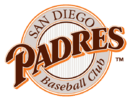

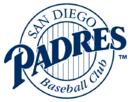

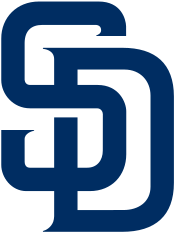
The team has played its spring training games at the Peoria Sports Complex in Peoria, Arizona since 1994. They share the stadium with the Seattle Mariners.
From 1969 to 1993, the Padres held spring training in Yuma, Arizona at Desert Sun Stadium. Due to the short driving distance and direct highway route (170 miles, all on Interstate 8), Yuma was very popular with Padres fans, and many fans would travel by car from San Diego for spring training games. The move from Yuma to Peoria was very controversial, but was defended by the team as a reflection on the low quality of facilities in Yuma and the long travel necessary to play against other Arizona-based spring training teams (whose sites were all in the Phoenix and Tucson areas, both rather far from Yuma).
Logos and colors
Throughout the team's history, the San Diego Padres have used multiple logos, uniform, and color combinations. Their first logo depicted a friar swinging a bat with Padres written at the top while standing in a sun-like figure with San Diego Padres on the exterior of it. The "Swinging Friar" has popped up on the uniform on and off ever since. Although the "Swinging Friar" is no longer used as the primary logo, it remains as the mascot of the team and is now utilized as an alternate logo and on the uniform sleeve.
In 1985, the Padres switched to using a script-like logo in which Padres was written sloped up. That would later become a script logo for the Padres. The team's colors were changed to brown and orange and remained this way through the 1990 season.
In 1989, the Padres took the scripted Padres logo that was used from 1985 to 1988 and put it in a gray ring that read "San Diego Baseball Club" with a striped center. In 1991, the color of the ring was changed to silver, and the Padres script was changed from brown to blue. The logo only lasted one year, as the Padres changed their logo for the third time in three years, again by switching colors of the ring. The logo became a white ring with fewer stripes in the center and a darker blue Padres script with orange shadows. In 1991, the team's colors were also changed, to a combination of orange and navy blue.
For the 2002 season, the Padres removed the stripes off the home jersey and went with a white home jersey with a cleaner look. The pinstripe jerseys were worn as alternate jerseys on certain occasions throughout the 2002 season. The Padres kept this design for two seasons until their 2004 season, in which they moved into their new ballpark.
The logo was completely changed when the team changed stadiums between the 2003 and 2004 seasons, with the new logo looking similar to home plate with San Diego written in sand font at the top right corner and the Padres new script written completely across the center. Waves finished the bottom of the plate. Navy remained but a sandy beige replaced orange as a secondary color. The team's colors were also changed, to navy blue and sand brown. For the next seven seasons the Padres were the only team in Major League Baseball that did not have a gray jersey, with the team typically playing in either blue or sand jerseys on the road and white or blue jerseys at home. In 2009, the San Diego was removed from the top right corner of the logo and two years later, the away uniform changed from sand to gray.
For the 2012 season, the Padres unveiled a new primary logo, featuring the cap logo inside a navy blue circle with the words "San Diego Padres Baseball Club" adorning the outer circle. The "swinging friar" logo was recolored navy blue and white. Another secondary logo features the Padres script carried over from the previous year's primary logo below the depiction of Petco Park in sand and above the year of the team's first season (EST. 1969). Until 2015, the blue and sand version was used on the home uniform, while the blue and white version was used on the away and alternate uniforms.[7]
In the 2016 season, the Padres wore a navy blue and yellow color scheme, similar to the one used on the 2016 Major League Baseball All-Star Game logo.[8] To coincide with the change, the Padres added a new brown and yellow alternate uniform to be worn mostly during Friday home games.
For the 2017 season, the Padres revealed a new color scheme and new jerseys for the second straight year. The yellow was scrapped from the home uniform and the team reverted to a navy blue-and-white combo. The word Padres returned to the front of the home uniform, but with a new script, while the script on the road uniform reverted to the San Diego wordmark style it used from 2004–11.[9][10][11] Despite this major change, the brown and yellow alternate uniform from the previous set was retained.
The club announced on January 25, 2019 that the original brown and gold colors would return for the 2020 Major League Baseball season.[12] The new uniform designs featuring the brown and gold colors were officially unveiled on November 9.[1] The team featured brown and gold on each of the three unveiled jerseys, including the return of pinstripes to the Padre home jersey for the first time since 2001 and a sand-colored road jersey for the first time since 2010. The shade of the sand color is noticeably darker than the sand-colored road jerseys worn from 2004-2010. With the uniform change, the Padres are once again the only team in Major League Baseball that does not feature a gray jersey.
Military appreciation
Starting in 1996, the Padres became the first national sports team to have an annual military appreciation event.[13] Following in 2000, the Padres began wearing a camouflage to honor the military. The jersey will now have had seven different versions since.[14][15][16] Starting in 2008, the Padres began wearing camouflage jerseys for every Sunday home game. They also wear these uniforms on Memorial Day, Independence Day, and Labor Day. For 2011, the Padres changed the camouflage design to a more modern "digital" design, using the MARPAT design after receiving permission from then-Commandant Conway,[14] and dropped the green from the lettering and logo of the jersey. Green was replaced by a sand-olive color (also in the cap worn with the jersey). For 2016, to coincide with hosting the 2016 Major League Baseball All-Star Game, the Padres changed the camouflage jersey once again; this time to navy blue, however, this design was only worn for one season as for 2017, the Padres switched the camouflage jersey to Marine, which was used through 2019. For 2020, the Padres will begin using two different camouflage jersey colors: green and sand-olive, both with the current Padres wordmark. Since 1995[17] Marine Recruits from the nearby Marine Corps Recruit Depot often visit the games en masse during Military Appreciation Day, in uniform, often filling entire sections in the upper deck of Petco Park. When they are present, the team commemorates this with a special Fourth Inning Stretch featuring the Marine Hymn.[18] Through April 2005 over 60,000 marine recruits were hosted by the Padres.[19] This is part of an extensive military outreach program, which also includes a series of Military Appreciation Night games,[20] and game tapes mailed to deployed United States Navy ships of the Pacific Fleet for onboard viewing (a large portion of the Pacific Fleet is homeported in San Diego).[21][22][23]
The San Diego area is home to a number of military installations, including several Navy and Coast Guard bases centered on San Diego Bay, Marine Corps Air Station Miramar (former home of the "Top Gun" training program), and the Marine Corps training ground at Camp Pendleton. Civilians employed at those bases account for around 5% of the county's working population.
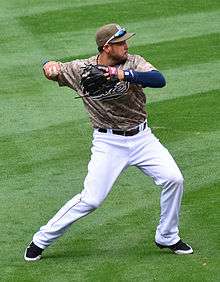
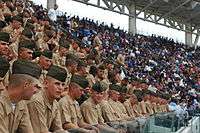
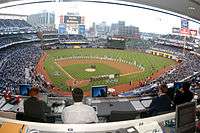
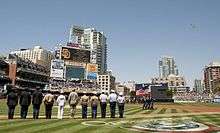
Mascot
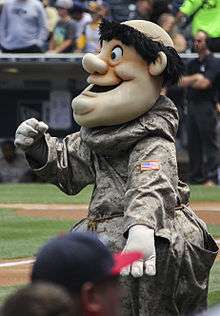
The "Swinging Friar" is currently the mascot of the team. Some in the past have confused The Famous Chicken as the mascot of the Padres. Although he does make appearances occasionally at San Diego sporting events, he has never been the official mascot of any San Diego sports team.
Season records
Achievements
Award winners and league leaders
Team records (single-season and career)
Baseball Hall of Famers
The following elected members of the Baseball Hall of Fame played and/or managed for the Padres.
| San Diego Padres Hall of Famers | |||||||||
|---|---|---|---|---|---|---|---|---|---|
| Affiliation according to the National Baseball Hall of Fame and Museum | |||||||||
|
Ford C. Frick Award recipients (broadcasters)
| San Diego Padres Ford C. Frick Award recipients | |||||||||
|---|---|---|---|---|---|---|---|---|---|
| Affiliation according to the National Baseball Hall of Fame and Museum | |||||||||
|
Retired numbers
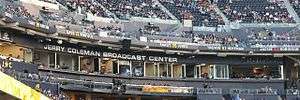
The Padres have retired six numbers. Five were in honor of Padre players and one was Jackie Robinson's number 42, which was retired by all of Major League Baseball.[25] The retired numbers are displayed on the upper deck facade behind home plate.
| No. | Retired number |
|---|---|
| Player | Name of player honored |
| Position | Player position |
| Career | Years played with Padres |
| Retired | Date number was retired |
| * | Member of Baseball Hall of Fame |
| No. | Player | Position | Career | Retired | Ref |
|---|---|---|---|---|---|
| 6 | Steve Garvey | 1B | 1983–1987 | April 16, 1988 | [26] |
| 19 | Tony Gwynn* | RF | 1982–2001 | September 4, 2004 | [26] |
| 31 | Dave Winfield* | RF | 1973–1980 | April 14, 2001 | [27] |
| 35 | Randy Jones | P | 1973–1980 | May 9, 1997 | [26] |
| 51 | Trevor Hoffman* | RP | 1993–2008 | August 21, 2011 | [26] |
| 42† | Jackie Robinson* | 2B | N/A | April 15, 1997 | [26] |
† Number retired by Major League Baseball


The Padres also have a "star on the wall" in honor of broadcaster Jerry Coleman, in reference to his trademark phrase "Oh Doctor! You can hang a star on that baby!" Nearby the initials of the late owner Ray Kroc are also displayed. Both the star and the initials are painted in gold on the front of the pressbox down the right field line accompanied by the name of the person in white. Kroc was honored in 1984, Coleman in 2001.
Team Hall of Fame
The following 14 people have been inducted into the San Diego Padres Hall of Fame since it was founded in 1999.[28]
| Year | Year inducted |
|---|---|
| Bold | Member of the Baseball Hall of Fame |
| Member of the Baseball Hall of Fame as a Padre | |
| Bold | Recipient of the Hall of Fame's Ford C. Frick Award |
| San Diego Padres Hall of Fame | ||||
| No. | Player | Position | Tenure | Inducted |
|---|---|---|---|---|
| — | Buzzie Bavasi | Team President | 1969–1977 | 2001 |
| 21 | Ken Caminiti | 3B | 1995–1998 | 2016 |
| 17 | Nate Colbert | 1B | 1969–1974 | 1999 |
| 2 | Jerry Coleman | Manager Announcer | 1980 1972-1979, 1981–2013 | 2001 |
| 19 | Tony Gwynn | RF | 1982–2001 | 2002 |
| 51 | Trevor Hoffman | P | 1993–2008 | 2014 |
| 35 | Randy Jones | P | 1973–1980 | 1999 |
| — | Ray Kroc | Owner | 1974–1984 | 1999 |
| 15 | Jack McKeon | GM/Manager | 1980–1990 | 2017 |
| 9, 09 | Benito Santiago | C | 1986–1992 | 2015 |
| — | Kevin Towers | GM | 1995–2009 | 2018 |
| 1 | Garry Templeton | SS | 1982–1991 | 2015 |
| 23 | Dick Williams | Manager | 1982–1985 | 2009 |
| 19 | Ted Williams | LF | 1936–1937 (PCL) | 2016 |
| 31 | Dave Winfield | RF | 1973–1980 | 2000 |
San Diego Hall of Champions
Gwynn, Winfield, Fingers, Gossage, Randy Jones, and Graig Nettles (3B, 1984–1987) are members of the San Diego Hall of Champions, which is open to athletes native to the San Diego area (such as Nettles) as well as to those who played for San Diego teams (such as Gwynn).
| Padres in the San Diego Hall of Champions | ||||
| No. | Player | Position | Tenure | Notes |
|---|---|---|---|---|
| — | Buzzie Bavasi | Team President | 1969–1977 | |
| 1 | Garry Templeton | SS | 1982–1991 | |
| 3 | Alan Trammell | Coach | 2000–2002 | Elected mainly on his performance with Detroit Tigers |
| 4 | Bob Skinner | Coach Manager | 1970–1973 1977 | Born in La Jolla |
| 7 | Tony Clark | 1B | 2008 | Elected mainly on his performance with Detroit Tigers |
| 8, 10 | Dave Roberts | OF Coach Manager | 2005–2006 2011–2015 | Raised in San Diego |
| 9 | Graig Nettles | 3B | 1984–1987 | Born and raised in San Diego, attended San Diego State |
| 19 | Ted Williams | LF | 1936–1937 (PCL) | Elected mainly on his performance with Boston Red Sox, born and raised in San Diego |
| 19 | Tony Gwynn | RF | 1982–2001 | Attended San Diego State |
| 31 | Dave Winfield | RF | 1973–1980 | |
| 33 | David Wells | P | 2004, 2006–2007 | Elected mainly on his performances with Toronto Blue Jays and New York Yankees, grew up in Ocean Beach, San Diego |
| 34 | Rollie Fingers | P | 1977–1980 | Elected mainly on his performance with Oakland A's |
| 35 | Randy Jones | P | 1973–1980 | |
| 51 | Trevor Hoffman | P | 1993–2008 | |
| 54 | Goose Gossage | P | 1984–1987 | |
Roster
San Diego Padres roster | ||||||
|---|---|---|---|---|---|---|
| Active roster | Player pool | Coaches/Other | ||||
|
Pitchers
Bullpen
|
Catchers
Infielders
Outfielders
|
Pitchers
Catchers
Infielders
Outfielders
|
Manager Coaches
45-day injured list
Restricted list
28 active, 29 player pool
| |||
Championships
| National League Champions | ||
| Preceded by: Florida Marlins |
1998 | Succeeded by: Atlanta Braves |
| Preceded by: Philadelphia Phillies |
1984 | Succeeded by: St. Louis Cardinals |
| National League Western Division Champions | ||
| Preceded by: Los Angeles Dodgers |
2005 & 2006 | Succeeded by: Arizona Diamondbacks |
| Preceded by: San Francisco Giants |
1998 | Succeeded by: Arizona Diamondbacks |
| Preceded by: Los Angeles Dodgers |
1996 | Succeeded by: San Francisco Giants |
| Preceded by: Los Angeles Dodgers |
1984 | Succeeded by: Los Angeles Dodgers |
Minor league affiliations
The San Diego Padres farm system consists of eight minor league affiliates.[29]
| Level | Team | League | Location |
|---|---|---|---|
| Triple-A | El Paso Chihuahuas | Pacific Coast League | El Paso, Texas |
| Double-A | Amarillo Sod Poodles | Texas League | Amarillo, Texas |
| Class A-Advanced | Lake Elsinore Storm | California League | Lake Elsinore, California |
| Class A | Fort Wayne TinCaps | Midwest League | Fort Wayne, Indiana |
| Class A Short Season | Tri-City Dust Devils | Northwest League | Pasco, Washington |
| Rookie | AZL Padres 1 | Arizona League | Peoria, Arizona |
| AZL Padres 2 | |||
| DSL Padres | Dominican Summer League | Boca Chica, Santo Domingo |
Radio and television
Padres' games are currently televised by Fox Sports San Diego. Don Orsillo is the play-by-play announcer, with Mark Grant as color analyst and either Julie Alexandria, Ron Zinter, or Bob Scanlan as field reporter. Mike Pomeranz hosts the Padres Live pre- and post-game show along with Mark Sweeney.
As of the 2018 season, Padres radio broadcasts in English are carried by KWFN 97.3 The Fan, after having previously been carried by sister station 94.9 KBZT upon the acquisition of the radio rights by Entercom in 2017.[30][31] Ted Leitner is the primary play-by-play announcer, with Jesse Agler working the middle innings of each game and Bob Scanlan serving as color analyst. The games are also broadcast in Spanish on XEMO-AM,La Poderosa 860 AM, with Eduardo Ortega, Carlos Hernández and Pedro Gutiérrez announcing. Padre games were also aired from 2006–2010 on XHPRS-FM 105.7.
Spanish language telecasts of Sunday games are seen XHAS-TDT channel 33. Until September 2007, Friday and Saturday games were seen in Spanish on KBOP-CA channel 43, until that station changed to an all-infomercial format. This makes XHAS-TDT the only over-the-air-television station carrying Padres baseball. English-language Padres over-the-air broadcasts aired through the years on XETV-TV 6, KCST-TV 39, KUSI-TV 51, KFMB-TV 8 and KSWB-TV 69.
John Demott was the Padres' first public address announcer when the team began in 1969. By the late 1970s Bruce Binkowski had taken over as PA announcer, and became the longest-serving public address announcer in the team's history, remaining until the end of the 1999 season. First DeMott and then Binkowski also were responsible with PA announcing duties for the San Diego Chargers and the San Diego State University Aztecs, both of which were joint tenants at Qualcomm Stadium with the Padres until the Padres moved into Petco Park. From Petco Park's opening in 2004 until 2013, the PA announcer was Frank Anthony, a radio host with 105.7 XHPRS-FM. On April 19, 2014, Alex Miniak was announced as the new Public Address announcer for the San Diego Padres. Miniak was formerly the PA announcer for the New Hampshire Fisher Cats, the Double-A affiliate of the Toronto Blue Jays.[32]
The San Diego Padres were first portrayed in the 1979 NBC made-for-TV film "The Kid from Left Field," starring Gary Coleman as Jackie Robinson "J.R." Cooper, a youngster who is passionate about baseball, and puts his knowledge to good use when he becomes the manager of the Padres and helps them lead to the World Series.
In 2016, the San Diego Padres were portrayed once again in the one-season Fox television series Pitch, starring Kylie Bunbury as Ginny Baker, the first female to play in Major League Baseball.
Educational involvement
The San Diego Padres established The Padres Scholars program, the first of its kind among professional sports. Originally each Padres scholar was selected as a seventh grader and received a $5,000 scholarship after graduation from high school to go towards higher education. This program has reached 389 students from its establishment in 1995 to now. Over the past few years the program has undergone a few changes to be effective an education standpoint. This program focuses on creating a close relationship between the chosen scholars and the team. As of 2011, 3 high school seniors will be chosen to receive a $30,000 scholarship to be awarded through the course of their higher education. Maintaining this prestigious award is conditional on maintaining contact with the Padres and providing proof of good academic standing.[33]
The San Diego Padres are the sponsors of and heavily involved in most aspects of the Sports Business Management MBA degree program offered in conjunction with San Diego State University's College of Business Administration. SDSU's Sports MBA is the only program of its kind created in partnership with a professional sports franchise. The curriculum focuses on the entire sports business industry, not just baseball. The program includes an internship. Members of Padres senior management regularly participate, including work with the development and continued coordination of SDSU's International Case Competition, which annually attracts participation from top business schools.
See also
- An American Journey: My Life on the Field, In the Air, and On the Air – Jerry Coleman's 2008 autobiography
References
- Cassavell, AJ (November 9, 2019). "Padres unveil new uniforms: 'Brown is back'". Padres.com. MLB Advanced Media. Retrieved November 10, 2019.
- Landers, Chris (February 11, 2020). "Feast your eyes on each uniform change for '20". MLB.com. MLB Advanced Media. Retrieved March 2, 2020.
After nearly three decades in various forms of navy blue, San Diego is going back to its roots -- while also looking forward, updating its classic look with a shimmering gold that pops against a deep, rich shade of brown.
- "Club Color Info" (PDF). 2016 San Diego Padres Style Guide. Major League Baseball Properties, Inc. December 16, 2015. Retrieved March 11, 2019.
- Brock, Corey (August 16, 2012). "Sale official, new Padres group sets sights high". MLB.com. MLB Advanced Media. Retrieved December 3, 2015.
- Paris, Jay (October 4, 2012). "PARIS: Progress, but Padres could come to regret decision on Headley". North County Times. Archived from the original on October 6, 2012.
- Kelly, Matt (May 16, 2019). "Padres' no-hitter drought makes history". MLB.com. MLB Advanced Media. Retrieved May 21, 2020.
- Brock, Corey (November 9, 2011). "Padres' new uniforms a nod to tradition". Major League Baseball Advanced Media. Retrieved January 10, 2016.
- Center, Bill (December 4, 2015). "Padres' uniforms salute past, future, Navy". Major League Baseball Advanced Media. Retrieved January 10, 2016.
- Cassavell, AJ (November 22, 2016). "Padres reveal lineup of 2017 uniforms". Padres.com. MLB Advanced Media. Retrieved December 28, 2016.
- Lin, Dennis. "Padres unveil 2017 uniforms; yellow removed from home look".
- "Padres unveil uniform changes for 2017".
- Adler, David (January 25, 2019). "Padres bringing back brown in unis in 2020". Padres.com. MLB Advanced Media. Retrieved March 11, 2019.
- MC1 Kim McLendon (April 9, 2008). "Padres Salute Armed Forces With Military Appreciation Night". Navy News Service. Retrieved February 21, 2011.
"America's Fans: Our Military and Major League Baseball". ourmilitary.mil. United States Department of defense. September 2, 2011. Archived from the original on February 19, 2013. Retrieved April 28, 2013. - Bill Center (January 25, 2011). "New uniforms make Padres' military tribute harder to see". San Diego Union Tribune. Retrieved February 17, 2011.
- 'Duk (February 26, 2011). "Padres' new camouflage jerseys could prove to be too realistic". Sports. Yahoo. Retrieved February 17, 2011.
- Corey Brock (January 25, 2011). "Padres unveil new 'Marine digital' jerseys". News. MLB.com. Retrieved February 21, 2011.
- Vasgerdsian, Ed (2008). "San Diego Padres-"The Team of the Military"". Leatherneck Magazine. Marine Corps Association. Archived from the original on July 13, 2011. Retrieved February 20, 2011.
- "San Diego Padres". Retrieved February 20, 2011.
- Tom Cushman (April 17, 2005). "Captain Jack salutes Padres' military outreach efforts". San Diego Union Tribune. Retrieved February 20, 2011.
- "Military Appreciation Series". San Diego Padres. MLB. Retrieved February 20, 2011.
- MCC Donnie Ryan; MC3 Sarah Bitter (September 6, 2008). "'Padres at Sea' Program Helps Peleliu Sailors and Marines Follow San Diego Baseball during Deployment". Navy News Service. Retrieved February 20, 2011.
- "Padres cover their bases with military". Sports Business Journal. June 1, 1998. Retrieved March 12, 2011.
- Sandy Burgin (October 23, 2002). "Ensch, Pads dedicated to military". San Diego Padres. MLB.com. Archived from the original on July 14, 2011. Retrieved March 13, 2011.
- Center, Bill (August 19, 2011). "Blanks keeps up hot pace in Padres victory". The San Diego Union-Tribune. Archived from the original on August 28, 2011.
- "Dressed to the Nines". National Baseball Hall of Fame and Museum. Archived from the original on April 29, 2015.
- Chass, Murray (April 14, 2001). "Winfield Chooses Padres Over Yanks". The New York Times. Archived from the original on April 29, 2015.
- "Padres Hall of Fame". Padres.com. Retrieved August 22, 2011.
- "San Diego Padres Minor League Affiliates". Baseball-Reference. Sports Reference. Retrieved May 15, 2020.
- "As Padres Move To KEGY, Format Flip Expected". Inside Radio. Retrieved February 21, 2018.
- Acee, Kevin. "Padres announce new radio home, spring broadcast schedule". San Diego Union-Tribune. Retrieved February 21, 2018.
- "San Diego Padres name Alex Miniak as new public-address announcer". San Diego Padres.
- "Padres Scholars | padres.com: Community". Sandiego.padres.mlb.com. June 19, 2012. Retrieved January 31, 2013.
Further reading
- Papucci, Nelson (2002). The San Diego Padres, 1969–2002: A Complete History. Big League Press. ISBN 9780971946606.
- Mitchell, Jane (2010). One on One: My Journey with Hall of Famers, Fan Favorites, and Rising Stars. SDP Publishing Solutions. ISBN 978-0-9824461-7-1.
External links
| Wikimedia Commons has media related to San Diego Padres. |

_cap_logo.svg.png)

